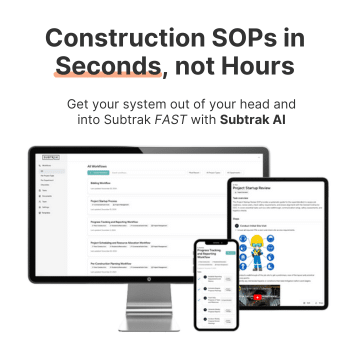Job Cost Tracking for Site Preparation
The Job Cost Tracking workflow provides site preparation contractors with a consistent method for controlling project expenses. It covers tracking labor, material usage, subcontractor charges, and equipment costs. Managers reconcile invoices, review budgets, and adjust forecasts. By standardizing this process, site prep companies reduce overruns, protect margins, and improve efficiency. Clients benefit from transparent billing practices and financial accountability. Teams gain accountability through documented approvals. With this workflow in place, site preparation contractors can strengthen professionalism, improve efficiency, and deliver projects more reliably while maintaining strong financial control.
Set up job cost codes based on budget categories (labor, materials, subs, equipment, etc.)
Enter original budget and any approved changes into job cost tracking system
Assign cost codes to all purchase orders, timecards, and subcontractor agreements
Record daily labor hours and costs to the correct job and task
Track material purchases and deliveries with matching invoices
Update subcontractor pay apps and payments under correct cost codes
Enter equipment rentals, fuel, or miscellaneous job expenses
Reconcile actual costs weekly or monthly against budgeted amounts
Flag overruns or under-spending for review with project team
Analyze cost-to-complete projections and adjust forecast if needed
Share job cost reports with project manager and leadership
Archive all cost data for final closeout and future estimating reference
👈 Use this SOP template inside Subtrak
Edit with AI. Customize in seconds. Store and share all your SOPs and checklists in one place.
